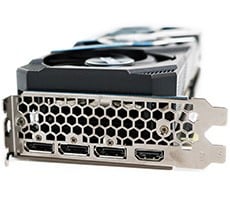NVIDIA GeForce 7800 GTX 512MB: Upping The Ante
|
| id |


As many of you probably know, the Catalyst v5.10a and new v5.11 drivers we used here have significantly boosted the performance of the Radeon X1800 XT in OpenGL based games. The performance increases are so significant, that the Radeon X1800 XT was actually able to surpass a 256MB GeForce 7800 GTX at 1280x1024 when anti-aliasing and anisotropic filtering were enabled. And at 1600x1200, the Radeon hung right alongside the 256MB GeForce 7800 GTX. The new 512MB GeForce 7800 GTX, however, smacks ATI's current flagship card back down a rung on the 3D performance ladder. The 512MB GeForce 7800 GTX actually outpaced the X1800 XT by about 50 FPS at default test settings, at both resolutions. And with anti-aliasing and anisotropic filtering enabled, the new 512MB GeForce 7800 GTX is between 21 - 25 FPS faster than the Radeon X1800 XT depending on resolution. Throw a second 512MB GeForce 7800 GTX into the mix and enable SLI, and NVIDIA's latest flagship gaming platform is again untouchable. Even a pair of 256MB GeForce 7800 GTX cards gets smoked by up to 30+ frames per second.








